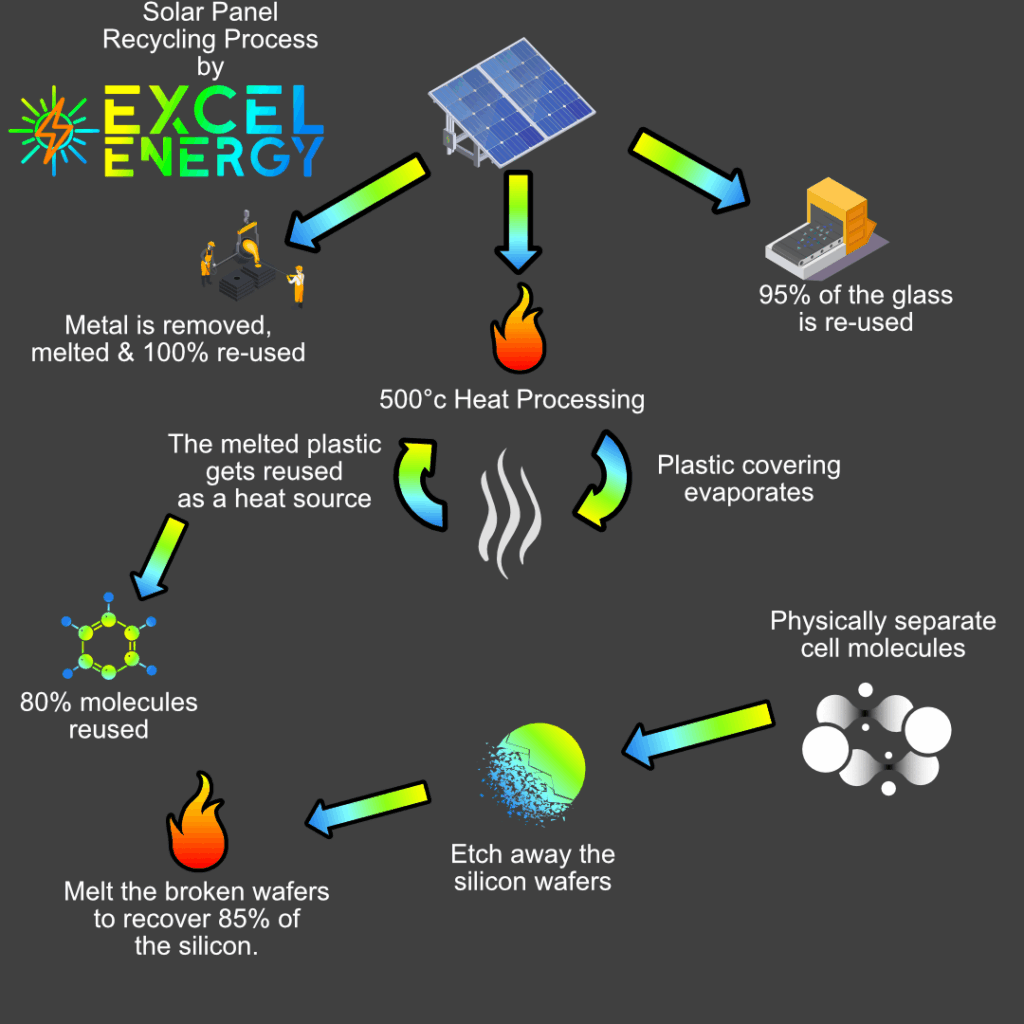Solar Panel Disposal in the UK
The Sunny Side of Sustainability: What Happens to Old Commercial Solar Panels?
The UK’s commercial landscape is changing. Rooftops on warehouses, factories, and office blocks are increasingly shimmering with commercial solar panels, a testament to our collective push towards a greener future. It’s a fantastic success story for renewable energy. But as with all technology, there’s a lifecycle.
The first generation of these panels, installed in the early 2000s, are now approaching the end of their lifetimes. Which raises a crucial question that every responsible business needs to ask: what happens next?
Effective solar panel waste management isn’t just an environmental nicety; it’s a legal and ethical responsibility. As the wave of solar energy adoption continues to swell, a literal wave of decommissioned panels will follow. Are we ready to handle it sustainably?
The Law: Why Can't You Just Bin Them?
Solar panels cannot be disposed of in the same manner as regular waste. In the UK, solar panels fall under the Waste Electrical and Electronic Equipment (WEEE) Regulations 2013. This legislation classifies them as electrical waste, placing a legal “duty of care” on the producer and the end-user.
This means panels cannot be sent to landfill and must be recycled by an Approved Authorised Treatment Facility (AATF). The cost of disposal is typically handled through a producer compliance scheme, which the manufacturer or importer pays into. When a business needs to dispose of old panels, they should contact a specialist waste management company that can arrange for compliant collection and recycling, ensuring up to 95% of the panels’ materials are recovered.
This means that solar panel disposal in the UK must be handled through specific, compliant channels. The primary goal of the WEEE directive is to reduce the amount of electrical waste going to landfill and to encourage recovery and recycling. For businesses, non-compliance can lead to significant fines and reputational damage. So, the moment you decide to decommission or upgrade your solar array, you need a plan that aligns with these regulations.
Excel Energy is registered with the Environment Agency under registration number CBDL518449 as a waste carrier, broker, and dealer. This allows us to take the necessary initial steps of the WEEE directive.

The Magic of Recycling Solar Panels
So, what does compliant disposal look like? Modern recycling of solar panels is a highly sophisticated process that allows for the recovery of a considerable percentage of the materials used to make them. A typical crystalline silicon solar panel is about 75% glass and 10% aluminium, with smaller amounts of silicon, copper, silver, and polymers.
A specialised recycling facility will undertake a multi-step process:
1. De-framing:
The aluminium frame is removed, which is 100% recyclable.
2. Separation:
The glass is separated from the electrical components. This high-quality glass can be easily and completely recycled.
3. Thermal Processing:
The panels are heated to a high temperature (around 500°C) to burn off plastics and encapsulants, allowing the silicon cells to be separated.
4. Metal Recovery:
Advanced chemical processes are then used to separate and purify the valuable metals, such as silicon, copper, and even the tiny amounts of silver found in the conductive wiring.
Through this meticulous process, specialist facilities can recover and recycle up to 95% of a solar panel’s material content. These recovered materials can then be fed back into the manufacturing supply chain, contributing to a circular economy and reducing the need to use the declining natural resources.
Counting the Cost of Solar Panel Disposal
Naturally, businesses need to budget for this process. So, what is the solar panel disposal cost? The good news is that it’s often less than you might think, thanks to producer compliance schemes.
When solar panels are first sold in the UK, the manufacturer or importer is legally required to pay into a Producer Compliance Scheme (PCS). This fee effectively pre-pays for the future cost of collection and recycling. The most prominent scheme for the solar industry is PV Cycle.
For the business owner (the end-user), this means the direct cost is often negligible. However, there can be associated costs to consider:



It’s vital to get a precise quote from your chosen waste management partner that outlines all of the costs upfront, ensuring there are no hidden surprises.

Choosing Your Partner in Sustainability
The final, and perhaps most critical, step is choosing the right partner for your solar panel waste management. You need a company that not only collects the panels but guarantees they are handled in a fully compliant and environmentally sound manner.
Look for a waste management provider that:




Taking the time to vet your disposal partner ensures you meet your legal obligations and contribute positively to the circular economy. The renewable energy your panels generated for decades should not end its life in a landfill.
By choosing responsible recycling, you ensure the legacy of your investment in solar power remains a positive one, from the manufacturing of the panel itself, to end of its life and subsequent recycling.
